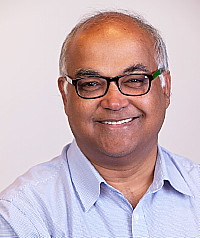 The Story of our Life in Australia Anisur Rahman
After my HSC I moved to Dhaka and was admitted to Dhaka University as a student of Accounting. But I was not meant to be an accountant. I saw an ad in one of the national dailies about a scholarship to study foreign trade in Romania. I applied and was selected. One cold evening in December 1976, I left Bangladesh for 5 years. But I was not meant to be a foreign trade expert either. After completing my compulsory Romanian language course, I switched my subject to computer science. To cut a long story short, after a lot of struggles with Romanian language and maths, Romanian food and biting cold, I managed to complete the course and received my masters degree. On the romantic side, I met a Romanian girl who was studying English at Bucharest University. She was also studying Hindi and Bengali as her subsidiary subjects. I was very impressed by her interest in oriental Indo-European languages, fell in love and got married. In the final year of my education in Romania, I applied for a job in Mohakhali Cholera Hospital, formally known as the International Centre for Diarrhoeal Disease Research (ICDDR,B). They offered me a computer programmer’s job. Readers may wonder why I am writing about Bangla movies, my education in Romania and my first IT job in Bangladesh when the story should be about our life in Australia! I believe these coincidental events in my life prepared the grounds for our big move to Australia. That is my justification for this rather lengthy prelude. One of the first people I met in ICDDR, B was Mr Mostafa Abdullah. He was an Australian citizen; another coincidence! He had migrated to Australia in 1977 but due to his family commitments had returned to Bangladesh in 1980. Mr Mostafa told me about the high demand of IT professionals in Australia. He suggested I try my luck after a couple of years of work experience in IT. IT was such a novelty those days! I got so engrossed in it that I totally forgot about Australia until I met Mr Chang 4 years later. He was a Chinese born Australian working for ICDDR, B as the Financial Controller. He encouraged me to try my prospects in Australia. I didn’t know the procedure; how does one apply? I enquired. “Write a letter to the Australian High Commission”, he advised. That night, I discussed with my wife about the conversation with Mr Chang. The following week we drafted a letter together, typed it up and posted it to the Australian High Commission. Months passed and we almost gave up all hope of ever receiving a reply. Then suddenly it came after 6 or 7 months. We thought it was a rejection letter. To our surprise it wasn’t, it was a formal application form for migration to Australia. We applied and in 3 months, were granted a permanent resident visa. Making the big move Then it was time to get ready for the journey. It wasn’t easy to part with almost everything we accumulated in 5 years - furniture, motor bike, appliances. Some we sold; some we gave away. One big suitcase and a carry bag was all that remained in the empty apartment. In August 1986, I left Bangladesh with my wife Aurelia and almost 2 year old daughter Stela. With a 24 hour stopover in Bangkok and a couple of hours transit in Hong Kong, we reached Sydney. This was the first time I crossed the equator. It was a strange feeling. Are we walking upside down in a country down under? It was a cold, windy, yet bright sunny day. The sun was up and the Earth beneath our feet, everything from the trees to the buildings appeared as they should be. We took a taxi to Villawood Migrant Hostel. I had found their address in the information kit the Australian High Commission in Dhaka had provided. I wrote to them and they confirmed our booking. As simple as that. I expected it to be like a hostel as we knew it in Bangladesh. But it was not like that at all. There was one villa for each family. We occupied one of them. In addition to the villas there was a reception building, a large canteen where the newly arriving migrants could have their meals and a few other buildings of different government agencies. CES was one of them, which I believe stood for Commonwealth Employment Service. One of the first things I did in Australia was to register myself with CES. To my surprise they organised my unemployment benefit right away. I believe these days new migrants have to wait two to four years to receive such benefits. In the next 2 weeks after multiple sessions with CES consultants I realised this was not the best way to find a job in my field. I contacted an employment agency in North Sydney. In the following two weeks I had two job offers in my hand. One was a furniture company in Bankstown and the other was a software house in North Sydney. Being a computer science graduate, the offer from the software house sounded more interesting to me and I accepted their offer. It was time to move out of the migrant hostel. I wanted to be close to my workplace so I rented a one bedroom unit in Redfern. One bedroom with an attached bath, one lounge and a small kitchen. That was our first home in Australia. 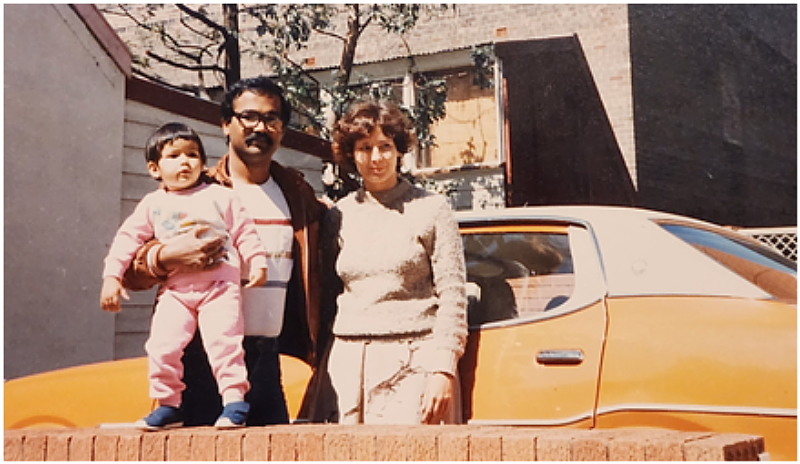 Near our unit in Redfern (1986) The place was close to the Redfern station. Every morning I used to walk to the station to catch a train to North Sydney which was only four stations away. There was a day care centre just five minutes walk from our unit. My wife also started to look for a job and quickly found one in the city. Our daughter went to the day care centre near our home. Everything was starting to fall in place. Then came a big shock. The company I was working for got taken over by another and I was retrenched with many others. I was lucky to find another job within a month also in North Sydney. This time it was with an insurance company. Time to buy a house There was a small Bangladeshi community in Eastlakes. I remember a few names like Farooq Khan, Walliur Rahman Tunu and Atiqur Rahman. We were all young, new in Australia with small families. Naturally, we got along quite well. I fondly remember our first trip out of Sydney to the picturesque southern city of Wollongong with them. Since both of us were working, we decided to buy a house. Around that time, two of my wife's Romanian friends, a married couple, came to Sydney. They stayed in the same migrant hostel where we had also stayed just a few months earlier. We visited them and showed them around. There used to be a large German community in Fairfield those days. They used to organise an annual festival similar to the German Oktoberfest. We went to the festival and got our first taste of multicultural Australia. While browsing the shop windows we came across a real estate agent. There it was, a picture of our dream home, a white timber house with a generous backyard and small swimming pool. The agent drove us to the house. I liked it very much. Considering the high interest rate at the time (14.9%) in the Hawke-Keating era, the price sounded right and something we could afford. Fairfax Community Newspapers After moving to Fairfield, I started to look for a job nearby. It did not take long to get a job with Fairfax Community Newspapers, a fully owned subsidiary of Fairfax Media Group. It published a number of community newspapers like Hills News, Rouse Hill Courier, Penrith City Gazette, Parramatta Holroyd and several others, providing a wide coverage of the Sydney metropolitan area. It was in Condell Park, near the Bankstown airport and not too far from Fairfield. In the meantime, Stela started primary school. I used to drop her off in the morning on my way to work. In the afternoon, a lady from a nearby day care centre would pick her up with a few other kids of working parents. On my way home I used to pick her up from there. This worked out well for us. My brother’s visit Around this time, my younger brother visited us. That was a very happy time for the whole family. After I picked him up at Sydney airport we were driving through some shabby areas of Sydney. I casually asked him, how do you like Australia? “Not like my imagination”, he replied in an unimpressed tone. Later when I took him to Sydney harbour to see the famous Opera House and Harbour Bridge, I asked him the same question again. My overwhelmed little brother remarked, “this is more than my imagination”. On the night before his flight back home I asked him, apart from the famous landmarks and marvellous blue sky, what else did you like here? I’ll quote his answer in first person, “While you and bhabi were at work I went out for a little walk one day. I stood at a zebra crossing and a huge truck came to a screeching halt in front of me. I was surprised and didn’t know what was happening. Then I saw the driver waving at me to cross the road. I quickly obliged. On the other side I stood there amazed for a while wondering did the truck really stop for me or did he have some mechanical issue! I decided to test it. I stood on the footpath for a while, when I saw a car coming I approached the zebra crossing again. Voila… the car stopped too. Coming from the land of chaotic traffic to witness this level of driving manners and etiquette is a truly amazing experience for me!” First visit to Bangladesh One of the big events in our lives in Australia was the first visit to Bangladesh after 5 years. When we moved to the house in Fairfield I pasted a large map of Australia on my study room wall. The idea was to get used to different areas of this vast land and learn the names of smaller cities and towns. Before the trip, Stela was 7 by then, I started to prepare her for any possible shock she might experience. Next to the big map of Australia I pasted a smaller world map and showed her where Bangladesh was and how small it was. I tried to get myself to her level and discussed different aspects of life in Bangladesh as much as a 7 year old can understand. In summary, it’s a very small country so don’t expect too much from it. Then the big day came. With a suitcase full of gifts for family and friends, including souvenirs of the Opera House and Harbour Bridge, Boomerangs and Koalas, post cards and key rings, we took off. After a night in Singapore we landed in Dhaka the next day before noon. The plane was still moving on the runway. Stela looked outside curiously and said, “Bangladesh is biiiig!” That was an eye opener for me. Of course Bangladesh is big! Probaho One of the most important parts of my life in Australia was getting involved in the publishing of Probaho (প্রবাহ), a monthly Bangla magazine published from Sydney. The first issue was published in November 1996. These were the initial days of low speed dial up internet in Australia. We used to publish local news and articles, summary of news from Bangladesh. It was very much welcomed by the community. We ran it uninterrupted for 6 years. The last copy of Probaho was published in September 2002. 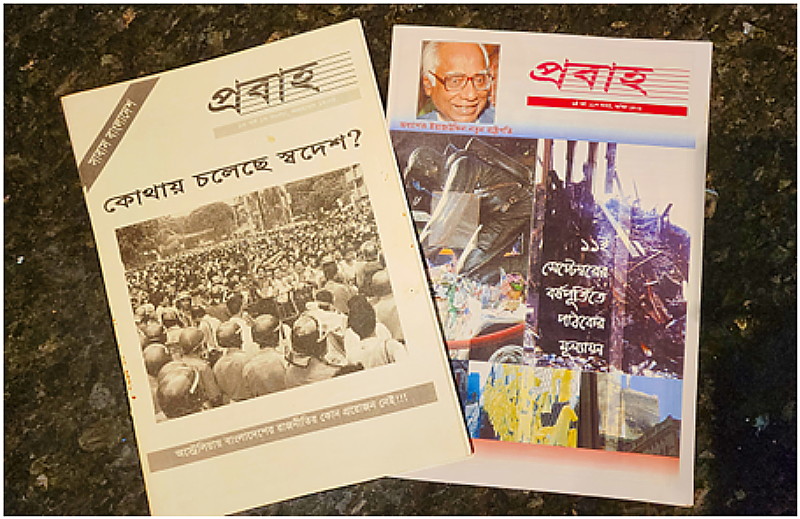 First and last issues of Probaho We had an editorial board of 7 enthusiasts. Every month we used to get together in one of the members' houses with our laptops, PCs and a laser printer. Not everyone had a laptop those days so the whole bulky PCs had to be carried. We used to spend the whole night typing the handwritten stories, collecting important news from Bangladeshi newspapers available on the net. It was not just copy and paste. Fonts were not compatible. I even wrote a software to convert incompatible fonts to the one we needed. It was challenging. After the whole night of work some of us would run to the press with tired eyes, get the magazine printed, bound, edge trimmed, packed and posted to subscribers. All that for a yearly subscription of 20 Australian dollars! We celebrated the 5th anniversary of Probaho in a big way. On our invitation, the famous Lalon song maestro Farida Parvin came to Sydney to entertain us. Preo is born After a long gap of eleven years, our second child was born. A boy we named Preo (প্রিয়). Our daughter was over the moon to have a tiny little brother of her own. I managed to bring my parents over on that occasion. It was also an opportunity to meet with my mother-in-law who lived with us for 15 years after my father-in-law passed away. My wife being an only child, we were all she had. She was a huge support for our family in raising Stela and Preo. She lived with us until she passed away in 2008. Fairfax Media Soon after Preo was born I was asked to join Fairfax Media. A $340 million dollar fully automated state of the art new Fairfax printing facility over a 50,000 square meter land in Chullora started operation. Many old systems and softwares needed modifications, new applications needed to be installed. It was a great opportunity for me. I decided to leave Fairfax Community Newspapers and join the mothership. It was a much bigger environment using large mainframe computers. Sydney Olympics The year 2000 was a pivotal time in our lives. Our family was growing so we moved into a larger house in Baulkham Hills. Bigger than the house, was the Sydney Olympic Games which were being hosted around the same time. Since childhood, the Olympics was an event we only read about in newspapers and later watched on TV. This time it was happening right in the city I lived in! I was lucky enough to win 4 tickets to the opening ceremony through a ticket lottery. On September 15, we attended the huge event, watching thousands of performers present a spectacular ceremony in front of an audience of 110,000 people. It was one of the most surreal and memorable experiences of our lives. 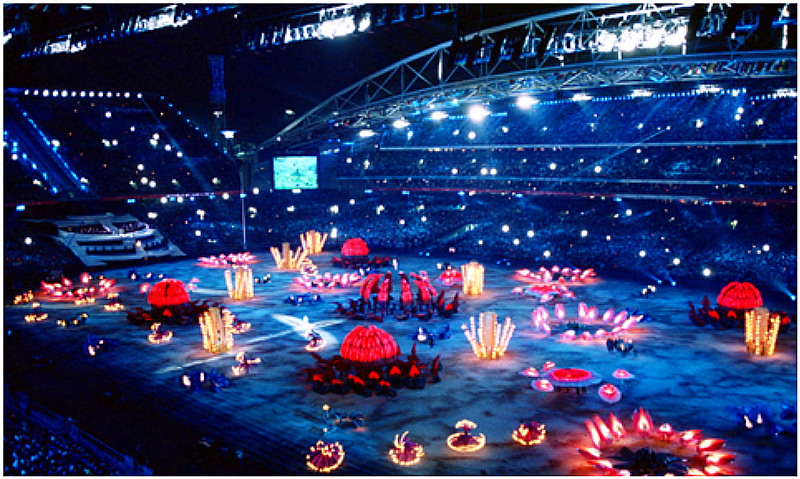 Sydney Olympics opening ceremony (15 Sep 2000) bangla-sydney.com In 2003 I started my next venture, a web portal for the Bangladeshi community in Sydney. I was very interested in Tim Berners-Lee’s work who singlehandedly changed the world by creating the World Wide Web (WWW). By 2003 several web development tools became available which made it easier to create static sites. But being a computer programmer myself I wanted to go deeper and understand the nuts and bolts of it. I wanted a dynamic site with many automated features. Bangla date is one of them. It is not something I copy and paste from a Bangla calendar everyday. It is computed by the site and displayed at the top of the home page. Individual authors’ archive is another feature. If you write to bangla-sydney, you’ll find all your articles there under your name. There are many other hidden features of the content management system I coded myself. After 20 years of covering community events, editing articles, photography, video editing and managing the site and public relations, I believe I have come to the end of the road. There are many professional tools to create dynamic websites these days. On the social media side, Facebook, YouTube, Instagram and Twitter have captured the hearts and minds of our new generation. They will carry our web experience forward into the unknown future we can’t even imagine today. Community achievements Other writers of this series wrote in detail about our achievements as a community. I’ll mention only two: At the turn of the century (Bangla year 1400) the Bangladeshi community held the first Boishakhi Mela in Sydney. From the small space in the grounds of Burwood Girls High School, it moved to the larger venues of Sydney Olympic Park. After 31 years of uninterrupted yearly celebrations (except for a couple of years during the Covid pandemic) it has truly become a tradition as we anticipate eagerly. So many names come to mind who started and carried it forward through their vision, dedication and hard work. The most notable among them are Gazi Ruhul Haque Uzzol, Dr Abdur Razzaque and Sheikh Shamim.  Boishakhi Mela at Sydney Olympic Park Athletic Centre (2012) This year (2024) Sydney’s Ashfield Park book fair celebrated its 25th anniversary. Another success story of the Bangladeshi community in Sydney. Book fair organising committee (Ekushe Academy Australia) with the help from Ashfield Council, Bangladesh government and community members, an international mother language day monument was erected at Ashfield Park book fair ground. This has become a must-see site for the Bangladeshis who visit Sydney. Two of the men among many others who were instrumental in making this happen are Nehal Bari and Nirmal Paul. 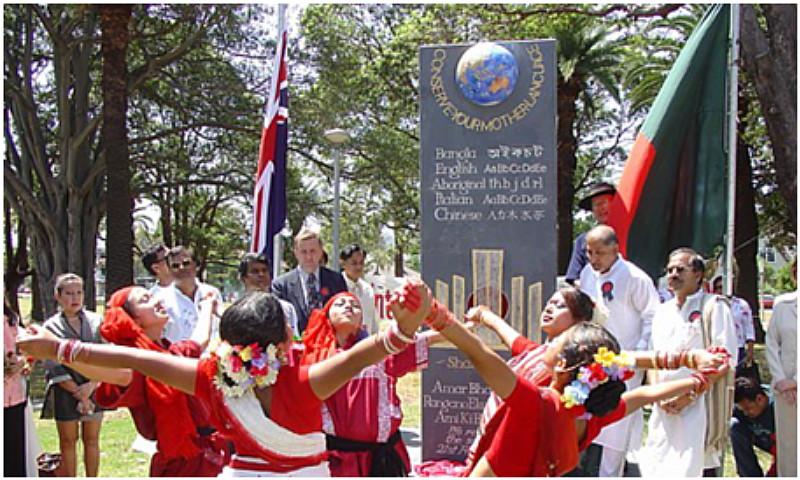 Opening ceremony of the IMLD monument (19 Feb 2006) Anisur Rahman, Sydney, Australia |
